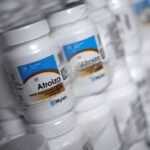Which Birth Control Pill That Doesn’t Cause Weight Gain?

What is the birth control pill?
The birth control pill (also called “the Pill”) is a daily pill that contains hormones to change the way the body works and prevent pregnancy. Hormones are chemical substances that control the functioning of the body’s organs. In this case, the hormones in the Pill control the ovaries and the uterus.
There are different types of combination birth control pills that contain estrogen and progestin that are referred to as monophasic, biphasic, or triphasic.
• Monophasic birth control pills deliver the same amount of estrogen and progestin every day.
• Biphasic birth control pills deliver the same amount of estrogen every day for the first 21 days of the cycle. During the second half of the cycle, the progestin/estrogen ratio is higher to allow the normal shedding of the lining of the uterus to occur.
• Triphasic birth control pills have constant or changing estrogen concentrations and varying progestin concentrations throughout the cycle. There is no evidence that bi- or triphasic oral contraceptives are safer or superior to monophasic oral contraceptives, or vice versa, in their effectiveness for the prevention of pregnancy.
How Does It Work?
Most birth control pills are “combination pills” containing a mix of the hormones estrogen and progesterone to prevent ovulation (the release of an egg during the monthly cycle). A woman cannot get pregnant if she doesn’t ovulate because there is no egg to be fertilized.
The Pill also works by thickening the mucus around the cervix, which makes it difficult for sperm to enter the uterus and reach any eggs that may have been released. The hormones in the Pill can also sometimes affect the lining of the uterus, making it difficult for an egg to attach to the wall of the uterus.
Birth Control Pills And Weight Gain
Many women may discontinue their birth control medications because of concerns about weight gain, according to the U.S. National Library of Medicine. According to the U.S. National Library of Medicine, the potential ways that women could gain weight include:
- fluid retention
- muscle gain, as muscle weighs more than fat
- increase in body fat
These, however, are theoretical scenarios when someone is using hormonal contraceptives for birth control, and they remain unproven. After several decades of research, there still isn’t any conclusive evidence that the perceived effect of birth control on weight is real.
The largest review so far examined 49 studies of the combined pill and found “no large effect is evident”, but also that there wasn’t enough well-conducted research to be sure. The researchers found this is true no matter what type of progesterone the combined pill contained (for more on the different kinds of pill, check out this article). Other studies that looked at progesterone-only pills similarly have found little evidence of an effect. Maria Gallo, an endocrinologist at Ohio State University who co-authored the review, believes our belief in the pill-weight connection is down to a natural human bias.
What birth control pill that doesn’t cause weight gain?
Studies have shown that combination birth control pills do not appear to cause weight gain. After using the pill for six months, research participants in two studies did not gain any more weight than the people who weren’t using any kind of birth control pill .
Examples of combination birth control pills include:
- Apri
- Aviane
- Azurette
- Balcoltra
- Beyaz
- Caziant
- Cryselle
- Gianvi
- Junel
- Kariva
- Kelnor
- Levora
- Loestrin 24 Fe
- Low-Ogestrel
- Lutera
- Microgestin
- Natazia
- Nortrel
- Ocella
- Ogestrel
- Ortho-Novum
- Portia
- Previfem
- Safyral
- Trivora
- Velivet
- Yasmin
- Yaz
- Zarah
- Zovia
Note: It’s important to remember that the studies reports above used averages. Some people in these studies gain weight and some lose weight, and the amount of weight differs from person-to-person. Some people may be more prone to gaining weight on birth control than others.





